
| (erroneously: Nyctemera secundaria) ARCTIINI, ARCTIINAE, EREBIDAE, NOCTUOIDEA | (donherbisonevans@yahoo.com) and Rob de Vos & Stella Crossley |
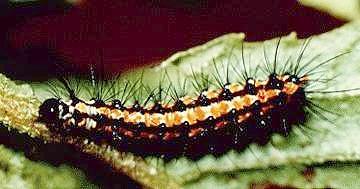

| (erroneously: Nyctemera secundaria) ARCTIINI, ARCTIINAE, EREBIDAE, NOCTUOIDEA | (donherbisonevans@yahoo.com) and Rob de Vos & Stella Crossley |

This Caterpillar has alternate orange and dark blue bands along the body, and is covered sparsely with long thin dark hairs. On each side of the head there is a cluster of longer dark hairs, which together look rather like a pair of horns.
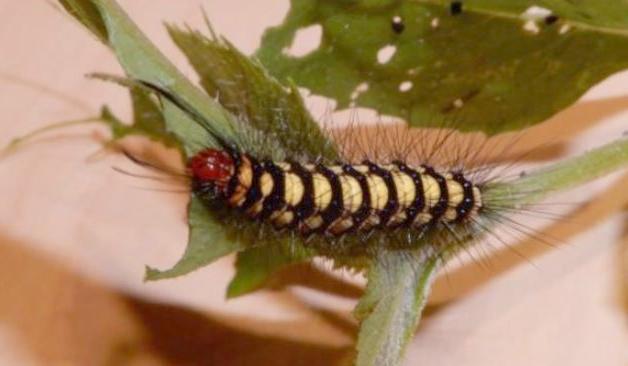
The caterpillar feeds on garden plants and weeds in ASTERACEAE, such as:
If disturbed, the caterpillar will drop to the ground and walk quickly away.
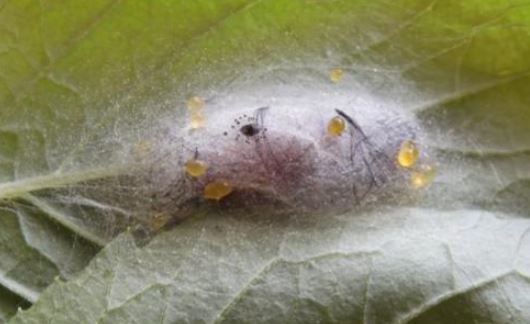
The caterpillar grows to a length of about 3 cms. It pupates in a thin walled cocoon under a leaf of its foodplant. The pupa is handsome too, having alternate light and dark brown segments.

After two to three weeks, the moth emerges. The adult moth has a wingspan of about 4 cms. It is dark brown except for a broad irregular white band across each forewing, and a large white patch near the front margin of each hind wing. The body has alternate black and yellow bands.
The moth is frequently seen flying during the day.
The adult moth is superficially similar to Nyctemera amicus, but can be distinguished by having one extra white spot in the white bar across each forewings.
The adult moth is often confused with Nytemera baulus, which occurs on islands across the western Pacific, and in northern Australia. It has a similar forewing pattern to that of Nyctemera secundiana, but the former has a much larger white spot on each hindwing.
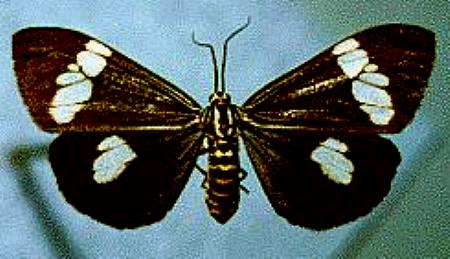
The eggs are laid in an open cluster, but separate from each other.
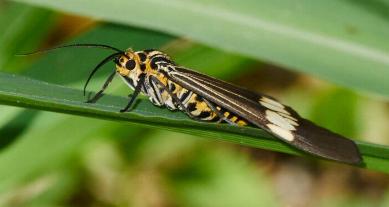
The species has been found in Australia, in
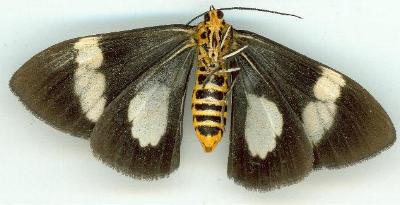
Further reading :
Peter Hendry,
A Night at Ray's,
Butterflies and Other Invertebrates Club,
Metamorphosis Australia,
Thomas P. Lucas,
On Queensland and other Australian Macro-Lepidoptera,
with Localities and Descriptions of new Species,
Proceedings of the Linnean Society of New South Wales,
Series 2, Volume 6, Part 2 (1891), pp. 280-281.
Buck Richardson,
Mothology,
LeapFrogOz, Kuranda, 2008, p. 13.
Paul Zborowski and Ted Edwards,
A Guide to Australian Moths,
CSIRO Publishing, 2007, p. 183.
 caterpillar |  butterflies |  Lepidoptera |  moths |  caterpillar |
(updated 10 February 2013, 20 September 2025)